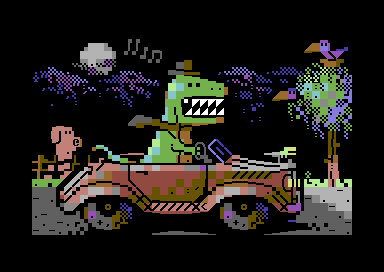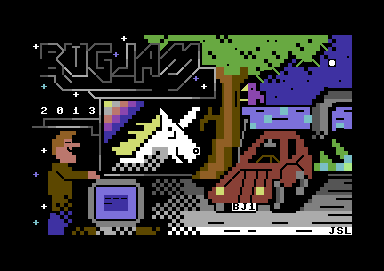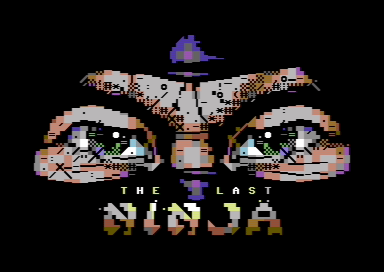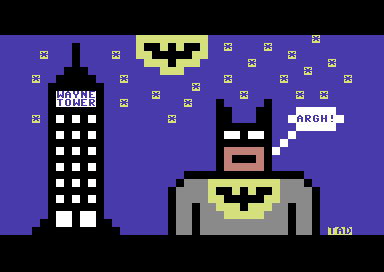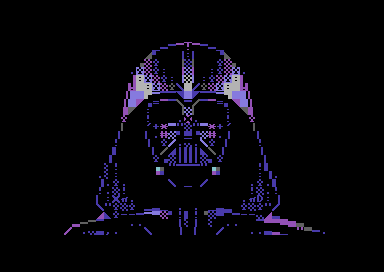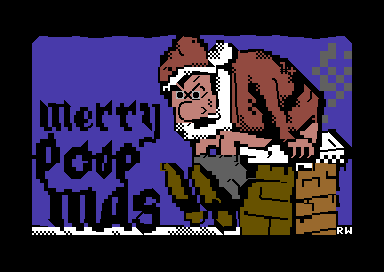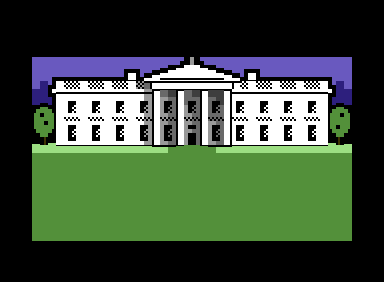The Unicode Consortium enables people around the world to use computers in any language, by creating free specifications and data form the foundation for software internationalization in all major operating systems, search engines, applications, and the World Wide Web. An essential part of our mission is to educate and engage academic and scientific communities, and the general public.
But 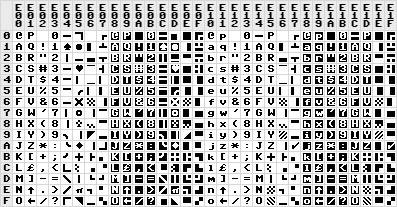 until today it was not created unicode standard for retro computers and teletex/minitel devices.
until today it was not created unicode standard for retro computers and teletex/minitel devices.
If you do not know about what retro-computer have to do with Unicode, you will have to read on.
The list is of retro computers that had specific graphic character set that the group considered is quite long:
- Amstrad CPC(464, 664, 6128, etc.)
- Apple 8-bit (II, II Plus, IIe,IIc,III,and the 16-bit II GS), including MouseText
- Atari 8-bit (400, 800, XL, XE)(“ATASCII”)
- Atari 16-bit (ST, STE, TT, Falcon),including the GEM windowing system
- Commodore 8-bit computers (PET, VIC-20, 64, 128)(“PETSCII”)
- Commodore Amiga (500,1000,etc.)
- Mattel Aquarius
- MSX (Spectravideo SV-328, Yamaha YIS503II, Canon V-20, etc.)
- Oric series (Tangerine Computer Systems)
- RISC OS (Acorn, other ARM machines)
- Sinclair 8-bit (ZX80, ZX81, ZX Spectrum, and Timex Sinclair equivalents)
- Tandy TRS-80 (TRS-80 Model I, Model III, Model 4, Color Computer)
- Texas Instruments TI-99/4A
- Teletext devices
- Minitel
Still not clear? Let us show some examples art and even a game created from such graphic characters in this case from Commodore Petscii Art.
The Unicode Consortium Consortium recently accepted proposal to add retro computer and teletex characters to Unicode or short UCS (Universal Coded Character Set). Same goes for teletex and Minitel. Teletex decoders were build in all analog tv sold after 1980 in Europe and it it still in use on digital TVs today. And probably this will be in Unicode standard 12.
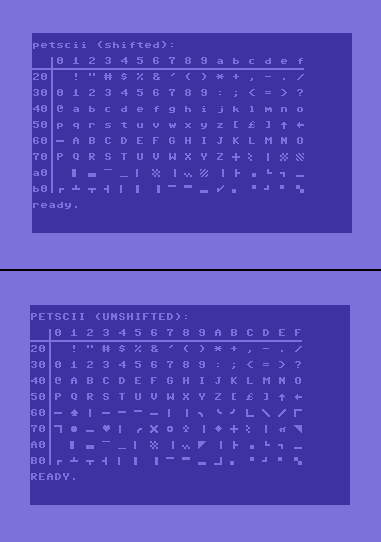 For many retro computers the only way to represent character sets, text and graphic mode or famous petascii art was only possible by pictures and there was no native way to represent them in modern way. Why is this important. Retro computer at the beginning did not have any graphic, the only graphic was character set, so they put some graphic in it. As there was not very strict standards in past every manufacturer created self standard characters as they fit computer purpose. Commodore created PETSCII that is still used today to create 1KB
For many retro computers the only way to represent character sets, text and graphic mode or famous petascii art was only possible by pictures and there was no native way to represent them in modern way. Why is this important. Retro computer at the beginning did not have any graphic, the only graphic was character set, so they put some graphic in it. As there was not very strict standards in past every manufacturer created self standard characters as they fit computer purpose. Commodore created PETSCII that is still used today to create 1KB 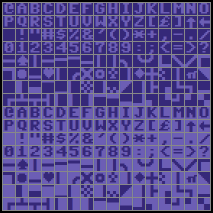 (mono) or 2KB (color) pictures. And you would be surprised what art are people creating with characters. At picture above are shown some PETSCII characters of course there are also inverted ones and some special like cleaning screen , deleting characters, 16 or more colors (depending of commodore model). Altogether with a simple new line RETURN could be created interactive art and with some advanced scrolling even movies 🙂
(mono) or 2KB (color) pictures. And you would be surprised what art are people creating with characters. At picture above are shown some PETSCII characters of course there are also inverted ones and some special like cleaning screen , deleting characters, 16 or more colors (depending of commodore model). Altogether with a simple new line RETURN could be created interactive art and with some advanced scrolling even movies 🙂
You can read about petscii start trek movie from 1986 here , yes you will also found that VHS was not very good back then 🙂
And after you check 1986 PETSCII movie, then check 2016 PETSCII demo from GENESIS PROJECT NOTHING BUT PETSCII for C64.
Sure it was normal to have PETSCII games back in old glory retro hardware days, but they still pop up like this great 2018 DIGILOI PETSCII Graphic Game.
source: unicode.org
related paper:Unicode for retro computers and teletext
PETSCII Graphic and Digiloi game can be downloaded from CSDb.dk



